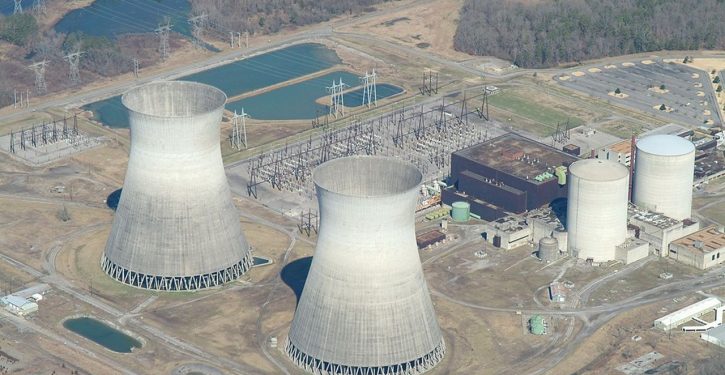
“In December 2022, after more than a decade of effort and frustration, scientists at the US National Ignition Facility (NIF) announced that they had set a world record by producing a fusion reaction that released more energy than it consumed — a phenomenon known as ignition. They have now proved that the feat was no accident by replicating it again and again,” reports Nature.
The NIF was designed not as a power plant, but as a facility to recreate and study the reactions that occur during thermonuclear detonations after the United States halted underground weapons testing in 1992. The higher fusion yields are already being used to advance nuclear-weapons research, and have also fuelled enthusiasm about fusion as a limitless source of clean energy. US special presidential envoy for climate John Kerry called for new international partnerships to advance fusion energy at the COP28 climate summit in Dubai last week, and the US Department of Energy (DOE), which oversees the NIF, followed up by announcing the new research hubs, to be led by the LLNL, the University of Rochester in New York and Colorado State University in Fort Collins.
Building the NIF was “a leap of faith” for many, and its success has had a real impact on the fusion community, as well as on public perception, says Saskia Mordijck, a physicist at William & Mary, a university in Willamsburg, Virginia. “In that sense, what is important is that scientists said they could do something, and then they actually did do something.”
The NIF works by firing 192 laser beams at a frozen pellet of the hydrogen isotopes deuterium and tritium that is housed in a diamond capsule suspended inside a gold cylinder. The resulting implosion causes the isotopes to fuse, creating helium and copious quantities of energy. On 5 December 2022, those fusion reactions for the first time generated more energy — roughly 54% more — than the laser beams delivered to the target.
The facility set a new record on 30 July when its beams delivered the same amount of energy to the target — 2.05 megajoules — but, this time, the implosion generated 3.88 megajoules of fusion energy, an 89% increase over the input energy. Scientists at the laboratory achieved ignition during two further attempts in October (see ‘A year of progress’). And the laboratory’s calculations suggest that two others in June and September generated slightly more energy than the lasers provided, but not enough to confirm ignition….It’s a long way from there to providing fusion energy to the power grid, however, and the NIF, although currently home to the world’s largest laser, is not well-suited for that task. The facility’s laser system is enormously inefficient, and more than 99% of the energy that goes into a single ignition attempt is lost before it can reach the target.
For that, researchers will need more efficient laser systems that will have to be created by partnerships of laboratories and partners in the nuclear industry. To date, most spending on fusion-energy research has focused on devices known as tokamaks, which use magnetic fields inside a doughnut-shaped ‘torus’ to capture and confine the energy generated by fusion reactions. That’s the goal at ITER, a consortium building the world’s largest fusion facility near Saint-Paul-lez-Durance, France. Tokamaks have also been central to many fusion projects in the private sector, but over 50 companies are working on other methods, such as laser fusion.
Would left-wing activists object to fusion-based nuclear power the way they do existing fission-based nuclear power plants? Fusion “does not create any long-lived radioactive nuclear waste. A fusion reactor produces helium, which is an inert gas. It also produces and consumes tritium within the plant in a closed circuit,” notes the International Atomic Energy Agency. “Fusion is among the most environmentally friendly sources of energy. There are no CO2 or other harmful atmospheric emissions from the fusion process, which means that fusion does not contribute to greenhouse gas emissions or global warming.”
Fusion would be better for the environment, but maybe they would still be suspicious of the technology. After all, existing fission-based nuclear power, although not as clean as fusion, is nevertheless better for the environment than the alternatives. A recent study found that nuclear power is best for the environment. Yet green activists in places like Germany have still forced the closure of nuclear power plants. And they have done so even though “every major study, including a recent one by the British medical journal Lancet, finds the same thing: nuclear is the safest way to make reliable electricity,” says a long-time environment activist. “Solar panels require 17 times more materials in the form of cement, glass, concrete, and steel than do nuclear plants, and create over 200 times more waste,” such as “dust from toxic heavy metals including lead, cadmium, and chromium.” Unlike wind farms, nuclear power plants don’t kill birds. And “wind turbines, surprisingly, kill more people than nuclear plants.” “Nuclear power is the safest form of energy we have, if you consider deaths per megawatt of energy produced,” notes Yale University professor Steven Novella.
Scientists are achieving other technological advances as well. Scientists have developed tiny robots made of human cells to repaid damaged cells. Nanorobots are also being used to fight cancer. “In a major advancement in nanomedicine, Arizona State University scientists…have successfully programmed nanorobots to shrink tumors by cutting off their blood supply,” reported Next Big Future.
Doctors recently used a surgical robot to carry out incredibly complicated spinal surgery, and used a robot to do a liver transplant. Robots can fit in small spaces in people’s bodies that a surgeon can’t reach without cutting through living tissue.



